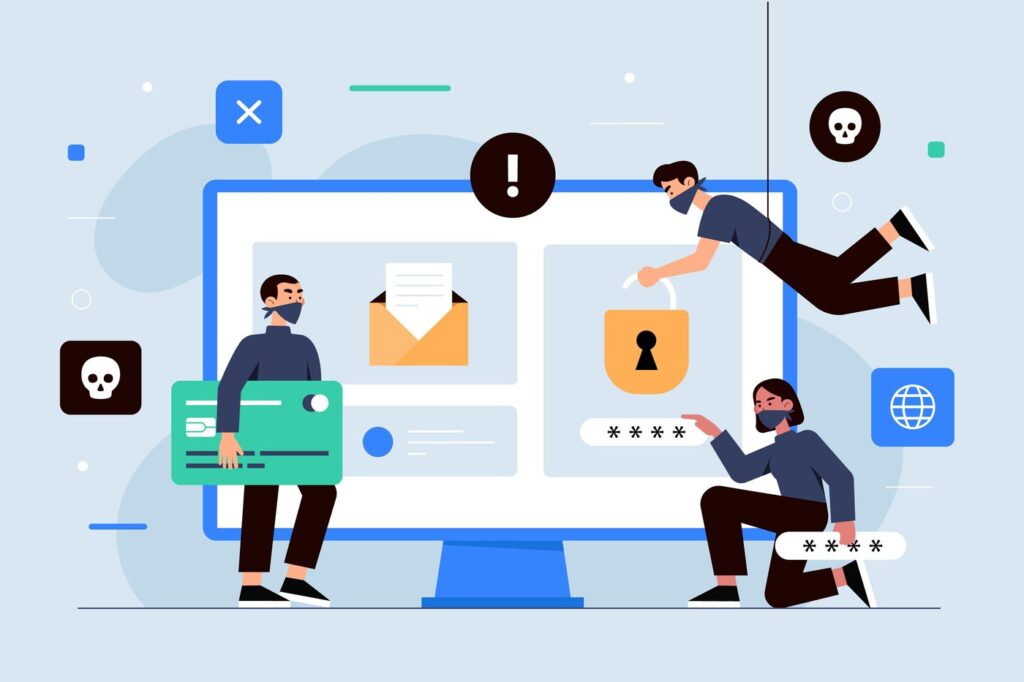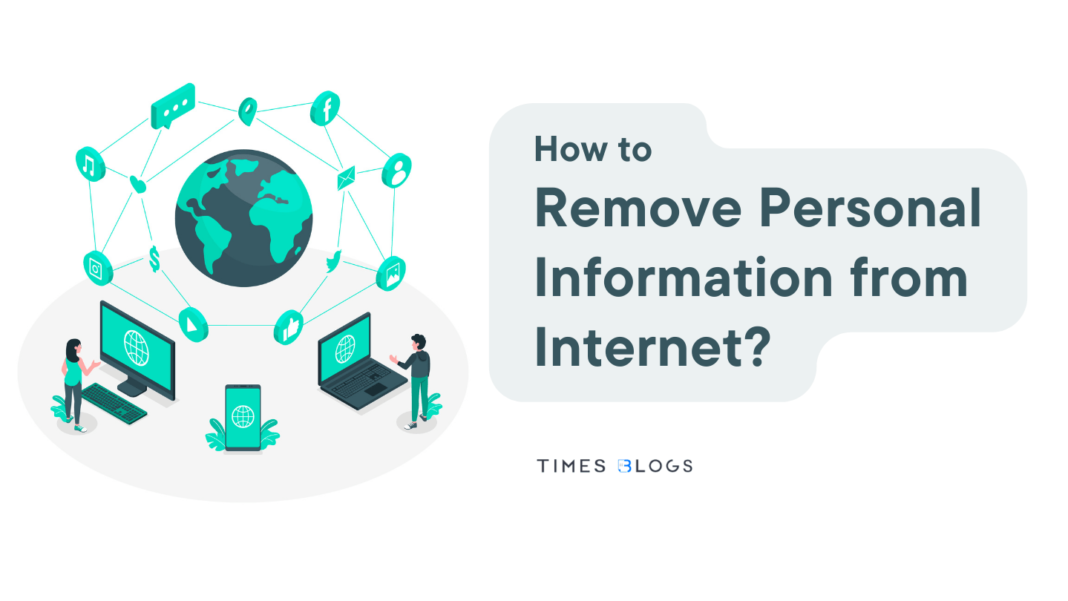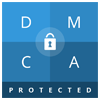In today’s era, as we ride the wave of unprecedented digital advancements, we relish countless conveniences that were once beyond imagination. Yet, this digital revolution also brings with it certain pitfalls, chief among them being the vulnerability of our personal data on the vast expanse of the internet. If you’ve found yourself echoing the concerns of many and pondering over how to remove personal information from internet, take solace in knowing that you’re part of a growing collective, more aware and cautious about their online footprint than ever before.
Privacy and data protection have transitioned from being mere buzzwords to pressing imperatives in our interconnected world. Recognizing this urgency, this guide aims to empower its readers. With a blend of cautionary insights and actionable steps, we’ll illuminate a pathway through which you can not only safeguard but also reclaim your digital privacy, exploring 10 pivotal methods to make it a reality.
Table of Contents

Why is it Important to Remove Personal Information from Internet?
The digital age has brought about unparalleled convenience and connectivity. However, this has come at the cost of personal privacy. Your digital footprint, when not managed correctly, can expose you to various risks. Let’s delve deeper into why removing personal information from internet is so vital:
Identity Theft
In today’s interconnected digital universe, our identities aren’t just defined by physical characteristics but also by the digital trails we leave behind. Key personal markers like your name, birth date, or even your hometown, while seemingly harmless, become invaluable assets in the vast online marketplace. When aggregated, these markers offer a comprehensive view of an individual, rendering them vulnerable. It’s a phenomenon that underscores the fragility of digital identity in an age where data is the new gold.
Implications: In the clutches of cybercriminals, these seemingly innocuous details transform into tools of deception. Unauthorized bank accounts, loans, or even travel bookings can be made, turning one’s financial world upside down. Beyond the immediate financial strain, the emotional distress of feeling violated coupled with the grueling road to recovery can have long-term repercussions, including a possible dent in one’s credit standing.
Unwanted Marketing
Modern communication tools, designed to bridge gaps, often become conduits for an overload of unsolicited information. Whether it’s that unexpected email offering you a ‘too-good-to-be-true’ deal, or a robocall announcing you’ve won a lottery you never entered, the digital age is rife with such unsought intrusions. This not only disrupts our daily flow but also raises questions about the sanctity of our personal data.
Implications: Each of these unsolicited communications signifies a breach, an indication that personal data is adrift in the vast online expanse, potentially being traded or misused. Beyond the sheer annoyance factor, this exposes individuals to a higher risk of scams, phishing attempts, or misleading schemes, emphasizing the need for heightened digital vigilance.
Privacy
At the heart of every democratic society lies the fundamental right to privacy. In the age of the internet, privacy evolves beyond mere physical boundaries to encompass our digital spaces. It’s not just about what we choose to share, but also about the unseen footprints we leave behind – those stray likes, shares, or even search queries. Every individual inherently deserves the agency to curate their digital narrative.
Implications: With personal data scattered online, it’s like having snippets of one’s life story freely available, open to interpretation and scrutiny. This could mean potential employers forming impressions based on old social media posts or acquaintances stumbling upon personal details. Worse, it could empower malicious entities, like cyberstalkers, with information, turning one’s digital life into a potential safety hazard.
Mental Health and Well-being
The digital realm isn’t just a space for information exchange; it has profound effects on our psyche. The exposure and potential misuse of personal information can lead to feelings of vulnerability, mistrust, and anxiety. As we invest emotionally in our online interactions – be it through social media connections or shared experiences on community platforms – the potential misuse or betrayal in these spaces can evoke strong emotional responses. Added to this is the strain of continuous exposure to potentially negative or triggering content, which can significantly impact one’s mental equilibrium.
Implications: The misuse or exposure of personal details can lead to a constant state of heightened anxiety, where individuals continuously worry about potential threats or misrepresentations. Additionally, the knowledge that one’s personal moments or vulnerable episodes are on display can lead to feelings of shame, embarrassment, or paranoia. Over time, these stresses can culminate in more severe mental health issues, like depression or chronic anxiety disorders, affecting overall well-being.
Financial Security
Our digital identities are often inextricably linked to our financial personas. Online banking, digital transactions, e-wallets, and investment platforms have become integral to our financial management. While they offer unparalleled convenience, they also become potential gateways for financial breaches if personal data is compromised. The security of our financial future, thus, is deeply tied to the sanctity of our digital information.
Implications: A breach in financial data can lead to immediate monetary loss, with unauthorized transactions or theft. But the implications go beyond the immediate. Stolen data can be used for long-term fraud, like securing loans or making large-scale transactions in one’s name, which can be disastrous for personal credit scores and financial reputation. Restoring compromised financial accounts can be time-consuming, stressful, and sometimes, costly.
Professional Reputation
In an era where LinkedIn profiles are as standard as business cards once were, our professional achievements, endorsements, and even missteps are cataloged online. Furthermore, the lines between personal and professional have blurred, with employers often checking potential employees’ social media profiles as part of background checks. In such an environment, the control and representation of personal information become pivotal to one’s career trajectory.
Implications: Misrepresentation or misuse of personal information can harm one’s professional image. An out-of-context social media post or an erroneous detail in online professional directories can lead to misunderstandings, missed opportunities, or even job losses. In professions where ethics and character are paramount, such as law, medicine, or public service, even minor digital blemishes can have outsized real-world consequences, jeopardizing careers and future opportunities.
10 methods to Remove Personal Information from Internet
In this digital age, where privacy concerns are on the rise, it’s crucial to safeguard your personal information from misuse and unauthorized access. Taking active measures can help you control your digital footprint. Here are some methods to assist you:
1. Google Yourself
- What: In the digital age, the simple action of entering your name into popular search engines such as Google, Bing, or DuckDuckGo offers a mirror reflecting your virtual persona. This self-exploration transcends mere curiosity; it’s a methodical approach to gauge the breadth and depth of your online imprint, revealing unexpected facets of your digital identity.
- Why: The internet, vast and interconnected, serves as a canvas where countless versions of our stories get painted. Recognizing and understanding these digital portraits is the cornerstone to mastering your online narrative, from the remnants of an old blog comment to mentions in obscure forums.
- How: Initiate this exploration with the basics: your name. However, extend your search parameters by weaving in elements from your past and present — perhaps the university you attended, places you’ve lived, or organizations you’ve been a part of. These nuanced searches not only illuminate the broader strokes of your digital identity but also highlight subtle details, granting you a holistic view of your internet persona.
2. Contact Website Administrators
- What: Discovering personal tidbits or references on unfamiliar web platforms can be disconcerting. The next proactive measure involves connecting with the digital custodians of these sites, typically known as website administrators or webmasters.
- Why: The internet, with its vast expanse, presents an array of platforms, each with its own set of rules and protocols. While many platforms offer users the autonomy to modify or erase content, others might set up barriers, making it imperative to directly liaise with the overseers. Engaging with these gatekeepers can be the key to transitioning from inadvertent online transparency to a more controlled digital presence.
- How: Embark on a virtual exploration of the site, particularly keeping an eye out for sections like ‘Contact Us’ or ‘About Us’. These hubs often serve as the gateway to communicate with the site’s caretakers, offering email addresses or direct communication forms. When reaching out, blend diplomacy with determination, articulating your concerns while highlighting the universal value of safeguarding personal data.
3. Delete or Deactivate Old Accounts
- What: Over time, our digital footprints expand, leaving traces on multiple platforms — from social media to shopping sites and forums. As priorities shift, some of these accounts fade into the background, yet they remain dormant with pockets of our data. Recognizing and addressing these latent accounts is an essential step towards refining your online profile.
- Why: Each account, even if inactive, is like a digital room containing memories, preferences, and personal details. The vast digital ecosystem has platforms with diverse security measures and policies. While some allow easy content deletion, others require a more hands-on approach. Ensuring these old accounts don’t become vulnerabilities is pivotal in maintaining a secure and streamlined online identity.
- How: Revisit platforms where you remember creating accounts. Dive into the user settings or profile sections, which typically provide options to deactivate or permanently delete accounts. In instances where the path isn’t straightforward or the platform lacks self-service tools, tap into their support systems, either through help centers or direct customer service channels. Communicate your intent clearly, emphasizing your right to digital privacy and data erasure.
4. Opt-out of Data Broker Sites
- What: In the vast digital tapestry, data brokers or aggregators stand out. These entities meticulously harvest and often trade personal data, diving deeper than just surface-level details to capture a person’s digital patterns and inclinations.
- Why: The data these brokers curate isn’t just information; it’s an unfolding digital story of our lives. From frequented locales to online interactions, these compilations offer a holistic view of an individual. With growing global emphasis on privacy, disentangling from these platforms is a strategic move to uphold digital privacy and security.
- How: Navigate through these broker sites, focusing on user-centric sections like privacy guidelines. Given today’s data-protection zeitgeist, many now offer clearer paths for users to opt out or request data deletion. By following their procedures, often a mix of online forms and direct outreach, one can mitigate the risk of personal data being commoditized in the digital marketplace.
5. Enhance Your Social Media Privacy Settings
- What: Social media platforms are our digital canvases, capturing snippets of our lives. But while they bring us closer to loved ones and acquaintances, they can also unintentionally expose intimate details if not configured correctly.
- Why: Every tweet, photo, or location check-in contributes to the mosaic of our online persona. These individual tiles, while ordinary on their own, collectively provide a comprehensive glimpse into our preferences, associations, and routines. It’s imperative to ensure that this collage remains a private gallery, accessible only to those you genuinely trust.
- How: Begin by accessing your social media accounts. Direct your focus to the privacy or security sections – the gateways to managing your online visibility. Fine-tune these settings to narrow down your audience. Beyond just post access, delve into finer controls like tag management, friend list visibility, and search discoverability. A periodic review of your connections, ensuring alignment with your current relationships, can make sure your digital chronicles are only accessible to a familiar and trusted audience.
6. Unsubscribe from Mailing Lists:
- What: It’s a familiar scenario: over the years, one often accumulates a plethora of newsletter sign-ups or promotional email subscriptions. While some may have been intentional, others creep in unnoticed. These subscriptions not only congest your email but hint at your details lingering in diverse digital repositories.
- Why: Beyond the incessant email influx, these subscriptions act as digital breadcrumbs, revealing where your email address and potentially other particulars reside. Each subscription poses a risk of your data being held, traded, or exploited in the vast digital network.
- How: Most genuine promotional emails come equipped with an ‘unsubscribe’ option, typically nestled at the bottom. Tapping this link is a step toward reclaiming your inbox’s serenity. To elevate your unsubscribe game, leverage tools and services designed to detect and help you bow out from numerous lists simultaneously, ensuring a more comprehensive digital cleanse.
7. Use a Virtual Private Network (VPN)
- What: A VPN, often likened to a protective digital tunnel, functions as both a shield and a conduit for your online activities. By encrypting the data you transmit and receiving, and by assigning you a different IP address, a VPN ensures that your digital footprints are both secure and untraceable, adding layers of anonymity and security to your online interactions.
- Why: In the age of heightened digital surveillance and ever-increasing cyber threats, a VPN becomes an essential tool. By maintaining the confidentiality of your online actions, it ensures that entities, from hackers to advertisers, remain in the dark about your browsing patterns, personal preferences, and sensitive information. This is especially crucial when accessing the internet from public Wi-Fi hotspots, which are often vulnerable to breaches and eavesdropping.
- How: Start by researching and identifying a trustworthy VPN service provider, ensuring they have a robust privacy policy and no-logs promise. Once you’ve chosen a provider, commit to a subscription that suits your needs, and proceed to install their client software on your devices. As you venture online, whether for casual browsing or more sensitive tasks, activate your VPN to create a fortified, encrypted connection. Over time, this habit will enhance your browsing security, making your digital journey both private and protected.
8. Avoid Publicly Sharing Personal Details
- What: This is the practice of exercising discernment when dispersing information online. It’s about being mindful of the breadcrumbs of personal information you leave across the internet, particularly in spaces like public discussion boards, comment threads, or any digital platform that’s open to the vast online populace.
- Why: Every tidbit of information, no matter how seemingly benign, can serve as a piece of a puzzle for malicious actors. Common details such as celebratory posts, anniversaries, or the name of your first pet might seem harmless, but in the wrong hands, they can be tools to decipher security prompts or engineer sophisticated scams tailored just for you.
- How: Cultivate a habit of digital reflection before broadcasting information into the vastness of the internet. Pause and evaluate the nature of the information and the platform you’re about to share it on. Ponder on its potential repercussions and whether it’s information you’d willingly hand to a stranger in a real-world setting. Adapting this cautious stance will not only reduce potential vulnerabilities but will also enhance your overall digital well-being.
9. Request Search Engines to De-list Content
- What: Occasionally, despite best efforts, your personal details might find their way onto web pages that are easily accessible via search engines. Major players like Google and Bing, acknowledging the user’s right to digital privacy, provide avenues to request the omission of such pages from their search outcomes.
- Why: Although this action doesn’t purge the content from its original source on the web, it does throw a digital veil over it. By ensuring these details don’t pop up in routine search results, the likelihood of someone stumbling upon them, particularly those with no deeper technical knowledge, diminishes considerably.
- How: Search giants like Google and Bing have set up dedicated tools that empower users to propose URL exclusions. To leverage this for Google, users can tap into the ‘Remove outdated content’ tool. Upon submitting a specific URL, the search engine then undertakes a review. If the provided URL aligns with their operational guidelines, and the content in question has already witnessed deletion or alteration at its source, the search engine will de-list it, making your digital footprint a tad bit lighter.
10. Seek Legal Assistance
- What: In certain instances, when amicable or direct requests to remove your personal data prove fruitless or if the information is shared with malicious intent, turning to the legal system can become an indispensable recourse.
- Why: Legal avenues are not just about enforcing removal; they’re about safeguarding your rights, especially when they’ve been infringed upon in severe ways like character defamation, unwarranted invasion of privacy, or where there’s an imminent threat to one’s personal safety or reputation. Legal directives, being backed by the weight of the law, often expedite responses and can compel platforms to take immediate corrective action.
- How: Initiate this path by seeking counsel from a legal professional, ideally one well-versed in cyber law or online privacy rights. Such an expert can chart out the most suitable strategy, ranging from dispatching a cease-and-desist notice to pursuing more intensive legal routes, ensuring your digital dignity remains intact and protected.
Check our related articles:
Conclusion
As we navigate the intricate waters of the digital age, the endeavor to maintain privacy can seem like a Sisyphean task. However, mastering the intricacies of how to remove personal information from internet is not only attainable but of paramount importance. By embracing the methodologies highlighted earlier and championing a discerning attitude towards data distribution, one can notably curtail their digital shadow. Regular audits of where your personal details manifest online, coupled with vigilance in future data disclosures, form the bulwark against unwarranted exposures. In this dynamic digital landscape, where personal data can be catapulted into the public domain in mere moments, the proactive steps to grasp how to remove personal information from internet transcend mere privacy concerns; they symbolize the reclamation of one’s digital sovereignty.




